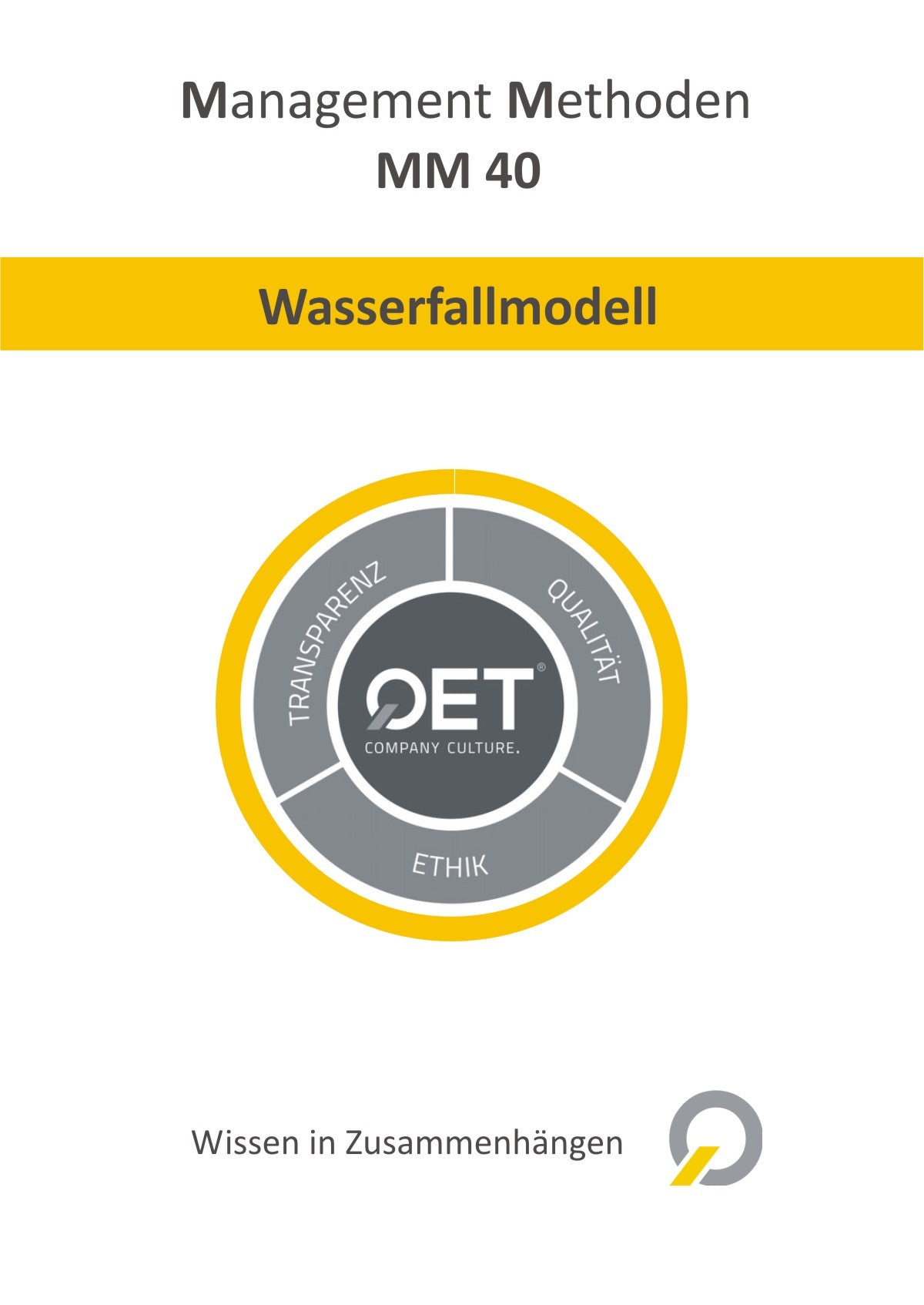QET Corporate Culture
MM 40 waterfall model
MM 40 waterfall model
Couldn't load pickup availability
The method originally originated in the construction and production process. Because expensive resources were used and an irreparable error could render an entire object unusable, it was important to carefully plan when and which further processing would take place. This method already existed and was described in more detail by Herbert D. Bedington in 1956 in a lecture on his experience developing software. Winston W. Royce first officially described the model in 1970 in Managing the Development of Large Software Systems.
The Waterfall model is linear and not agile. This means that, unlike Scrum (M39), for example, there is no overarching pattern behind the development team's work, which is repetitive and deviations are strictly avoided. Here, the work is determined individually for each project, but stages are always defined that should be followed whenever possible. A simplified example would be the creation of a website:
1.Planning:
We discuss with the client how information and services should be accessible on their website. They may have a rough idea of their online presence and design requirements.
2.Prototype:
A draft is now developed that shows the client what their website could look like at the end of the project. If any changes are needed, this is the final opportunity to discuss the prototype. Otherwise, this step is complete.
3.Implementation:
Everything that was promised in the draft is now implemented by scripting the website.
4.Verification:
The website's functionality is tested in various browsers, systems, and devices. If any irregularities are found, the code must be adjusted. However, the design remains untouched.
5.Maintenance:
The website must now always be up to date with the latest technology. Furthermore, there may be regular additions to the website that now need to be done on an ongoing basis.
This would be a possible form of a waterfall model. The key is that certain phases must be completed within strictly defined time frames so that the client can rely on a result. Typically, any changes to a completed phase are treated as a new order.
In the context of:
Q: Q01, Q08, Q15,
E:
T: T05, T07, T14
Share

